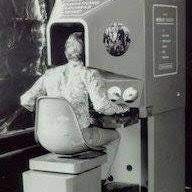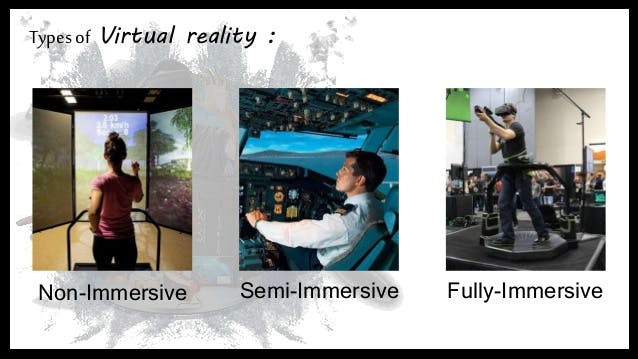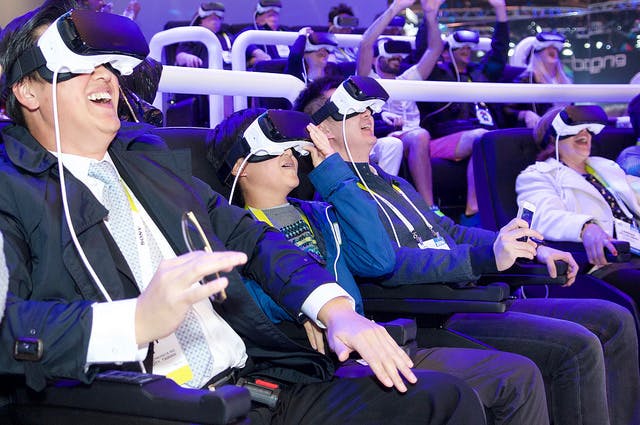Have you ever wondered how it would be if you were present somewhere virtually? Yes, this is totally possible with virtual reality technology in the market these days. Virtual Reality (VR) refers to a computer-generated simulation. A person can interact within an artificial 3D environment using electronic devices, such as special goggles with a screen or gloves fitted. This technology is booming in the gaming sector, and the following games are trending these days:
- Valve Index
- Oculus Rift (Available on Amazon)
- HP reverb
- HTC Vive (Available on Amazon)
History:
The first VR machine was created by then Cinematographer Morton Heilig in 1962 called Sensorama. Sensorama was a large booth that could fit up to four people at a time.
 Heilig wanted people to fully immerse themselves in their films and thought it to be the "Cinema of the Future." The term Virtual Reality is 1st introduced in the mid-1980s when Jaron Lanier, founder of VPL Research, began to develop the gear, including goggles and gloves, needed to experience VR.
Heilig wanted people to fully immerse themselves in their films and thought it to be the "Cinema of the Future." The term Virtual Reality is 1st introduced in the mid-1980s when Jaron Lanier, founder of VPL Research, began to develop the gear, including goggles and gloves, needed to experience VR.
Types of Virtual Reality:
Immersive Virtual Reality:
The term immersion into Virtual Reality is the dilemma of being physically present in a non-physical world. The user creates the VR environment in images, sound, or other stimuli. This immersion is important in VR-based applications such as VR gaming and therapy, and user engagement may vary.

Non-Immersive Virtual Reality:
It is the type of VR that provides an environment without being immersed in a virtual world with a computer's help. The important feature is that one can keep control over the physical surroundings of what's going around them, as sound and visuals. Non-immersive technology is what we are familiar with like you see this technology every day while switching on your PC, TV, or video game console like PlayStation.
Window's on Virtual Reality:
Windows on VR is a 3D virtual on regular desktop display without any specialized movement tracking environment. It provides augmented reality and mixed reality experiences with compatible head-mounted displays and is a part of the Windows 10 Operating System(OS), and is a mixed reality type.
Applications of Virtual Reality:
In Military:
VR helps to provide the ability to turn negative statics and provides maximum safety as 1 in 20 deaths of soldiers happen during training.
 Currently, it is used in all major fields in the military to minimize loss of life. In defense and security, it is mainly used to improve training skills and perform demo operations as VR can simulate any training by re-creating different environments.
Currently, it is used in all major fields in the military to minimize loss of life. In defense and security, it is mainly used to improve training skills and perform demo operations as VR can simulate any training by re-creating different environments.
In Education:
By using VR in educational sectors, students can interact with what they see as if they are really present over there. It enhances the ability to inspire student's creativity and spark their imaginations. As several schools and universities are adopting new technology, Virtual Reality is taking off these sectors.
 It allows students to experience places and destinations worldwide without leaving their place, even though one can experience galaxies and outer space through the help of VR.
It refers to interactive content which helps the viewer to experience a 360-degree scene. 360VR is used to teach pupils about the world around them, which is more virtually real and has the ability to inspire and engage students.
It allows students to experience places and destinations worldwide without leaving their place, even though one can experience galaxies and outer space through the help of VR.
It refers to interactive content which helps the viewer to experience a 360-degree scene. 360VR is used to teach pupils about the world around them, which is more virtually real and has the ability to inspire and engage students.
In Healthcare:
It is an important tool that helps physicians and doctors carry out very accurate diagnoses. To name a few, it is used in robotic surgeries, phobia treatment, surgery simulation, and training skills, making healthcare one of the biggest adopters of VR.
 Many organizations worldwide have started using VR in their operations and have seen it come out with many benefits. The launch of Oculus Rift and HTC Vive has further augmented VR usage in various sectors.
Many organizations worldwide have started using VR in their operations and have seen it come out with many benefits. The launch of Oculus Rift and HTC Vive has further augmented VR usage in various sectors.
In Entertainment:
 To make entertainment more realistic and enjoyable, 3D images appear of life-sized persons in VR are used. It provides an immersive entertainment experience to the audience. VR in entertainment focuses on enhancing and producing video-based immersive media. Further, it is also implemented in museums and art galleries with a rich background to interact with the user.
To make entertainment more realistic and enjoyable, 3D images appear of life-sized persons in VR are used. It provides an immersive entertainment experience to the audience. VR in entertainment focuses on enhancing and producing video-based immersive media. Further, it is also implemented in museums and art galleries with a rich background to interact with the user.
The Rising of Simulation in the Gaming Sectors:
 Research highlights that the VR market for gaming was worth $5.12 billion by the year 2019 itself. By the year 2027, gaming is expected to reach a substantial net worth of $45.20 billion. Gaming has made notable progress as it occupies a major part of the entertainment. Virtual Reality is expected to be a part of our lives soon; people will be able to adapt to it quickly. Soon it's going to be the future.
Research highlights that the VR market for gaming was worth $5.12 billion by the year 2019 itself. By the year 2027, gaming is expected to reach a substantial net worth of $45.20 billion. Gaming has made notable progress as it occupies a major part of the entertainment. Virtual Reality is expected to be a part of our lives soon; people will be able to adapt to it quickly. Soon it's going to be the future.

